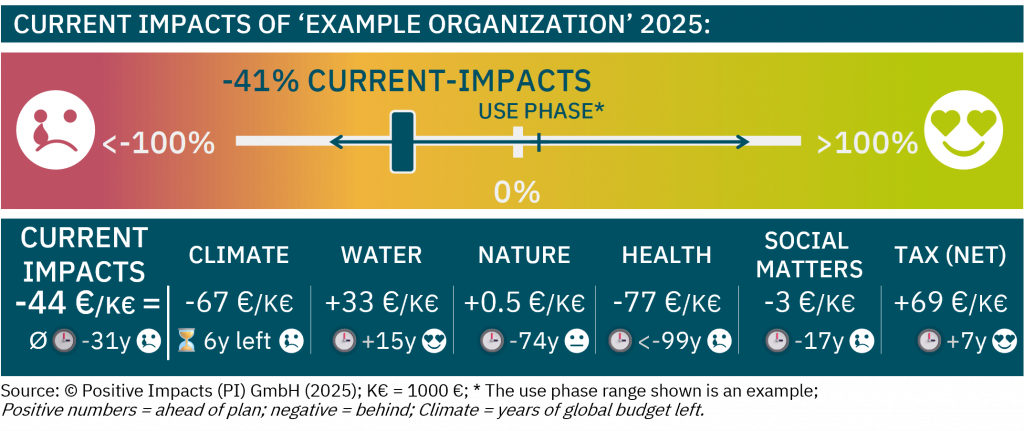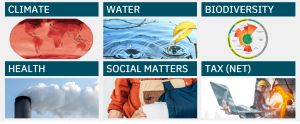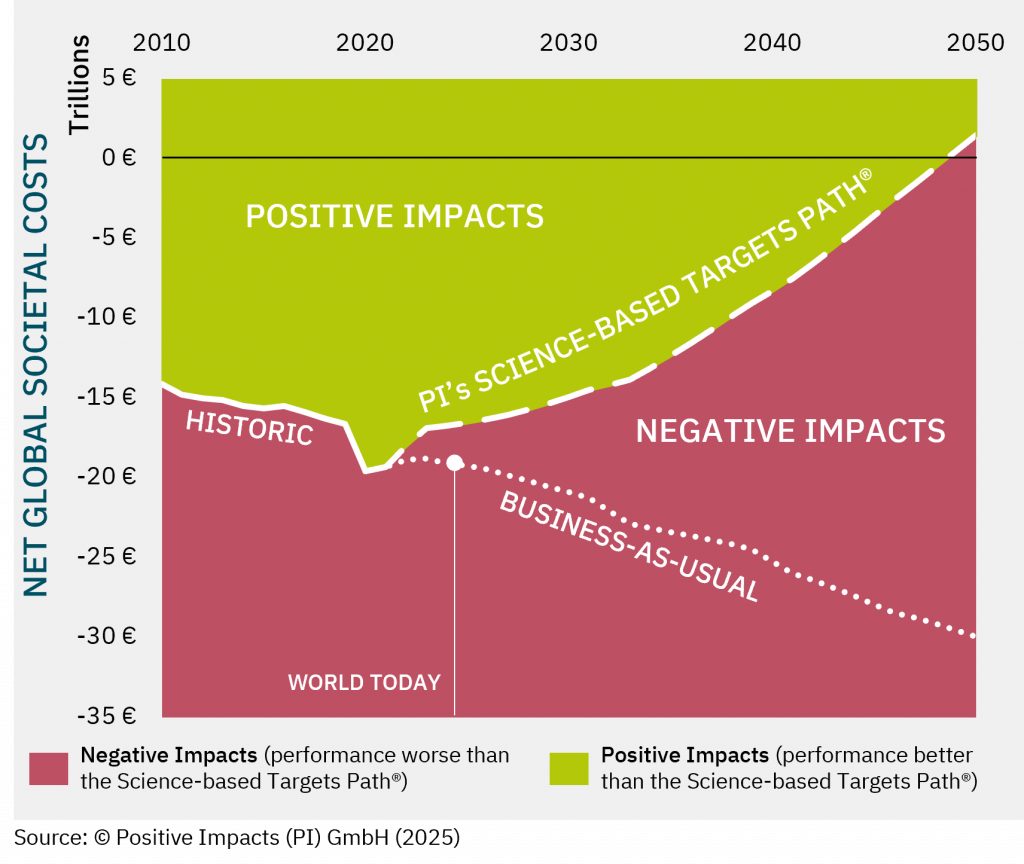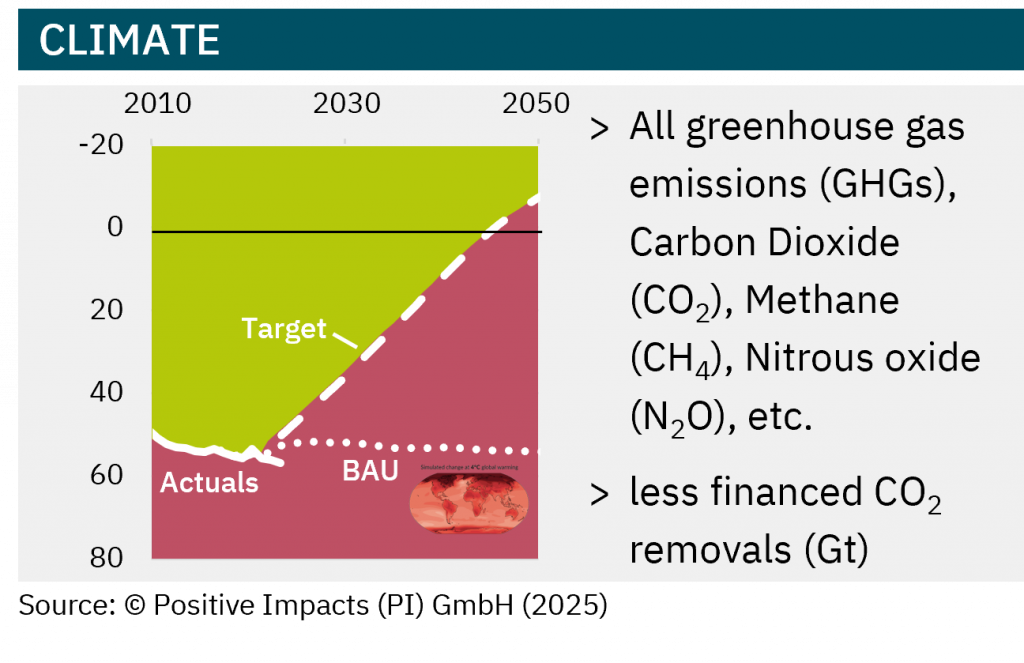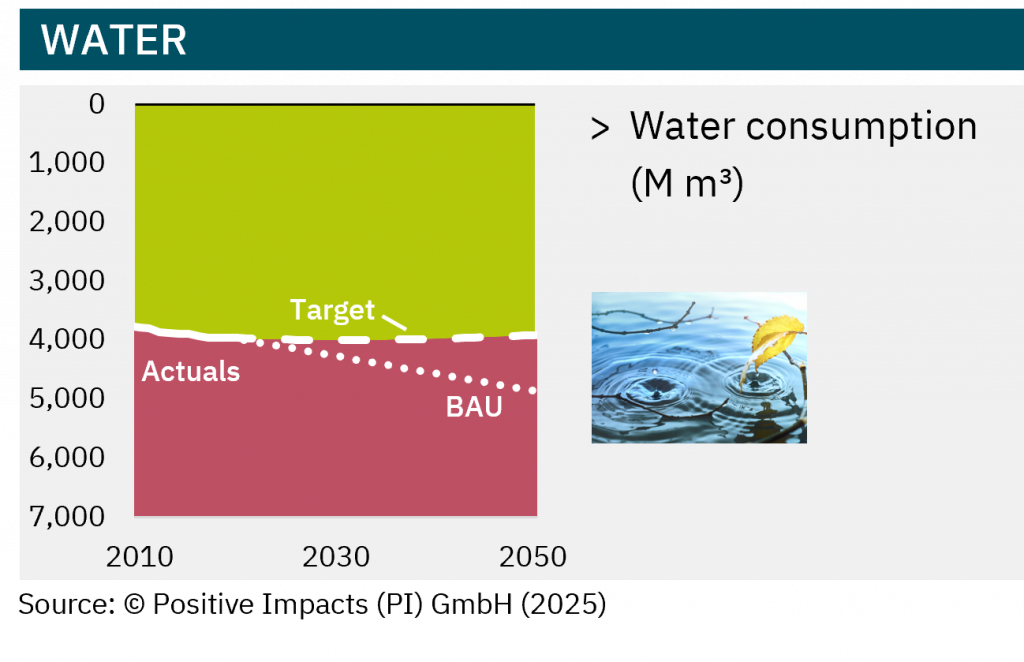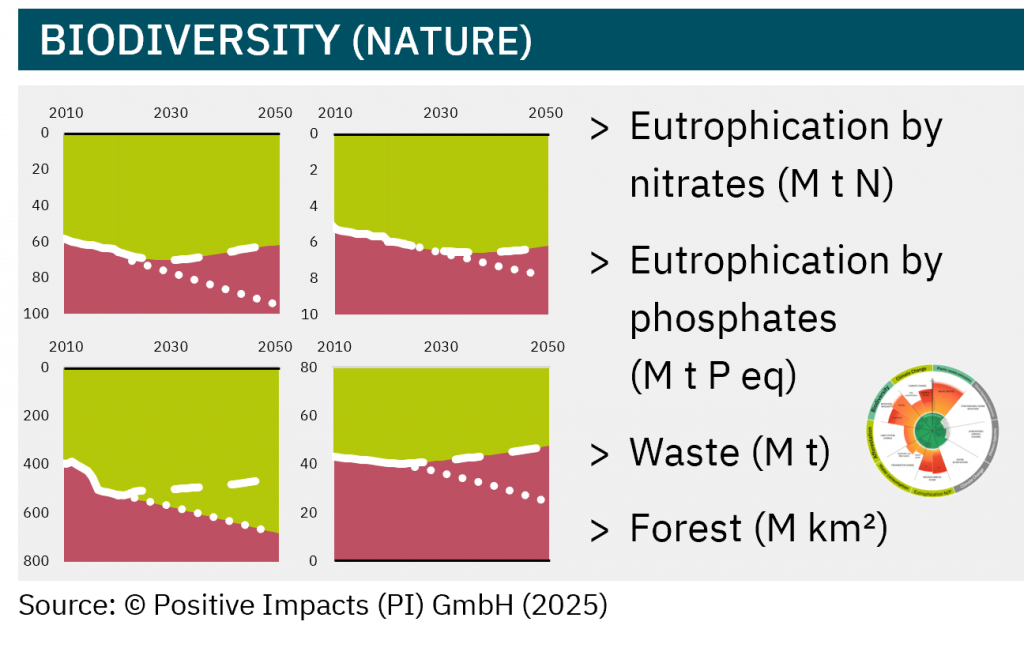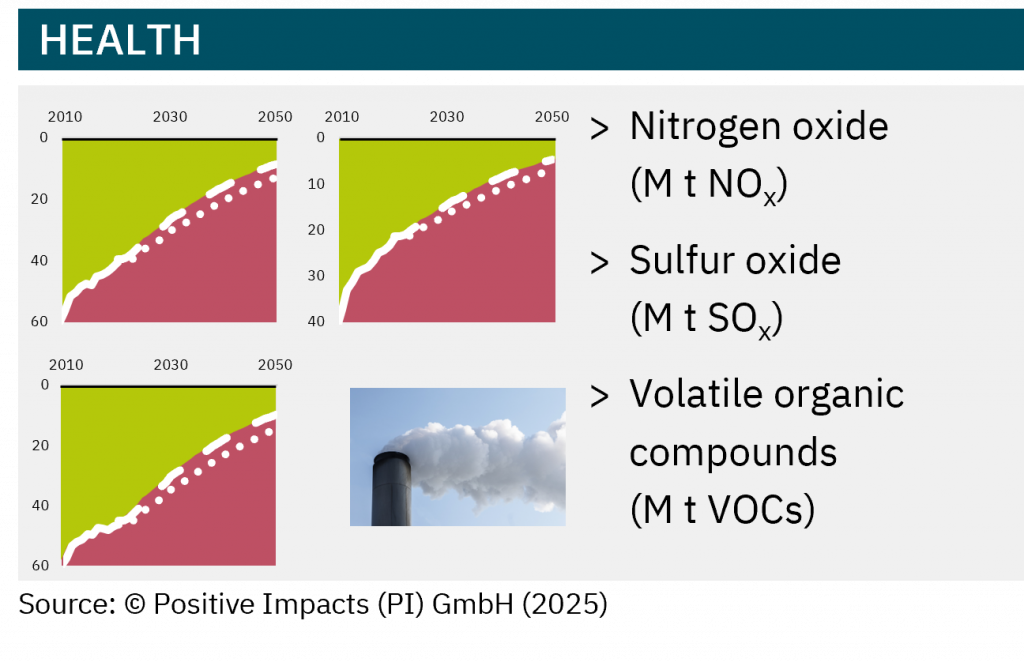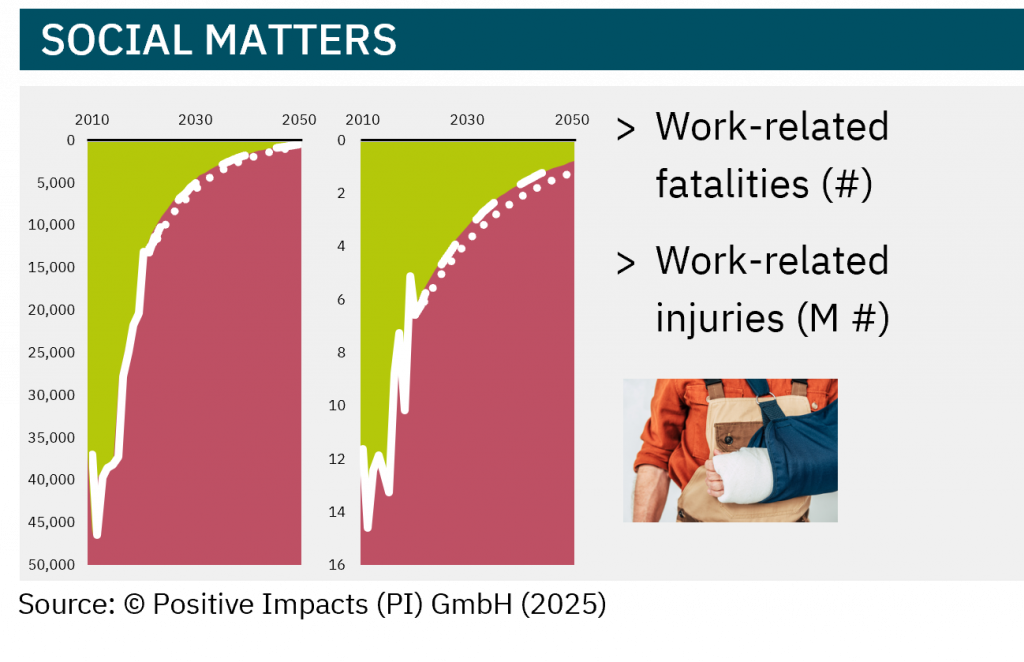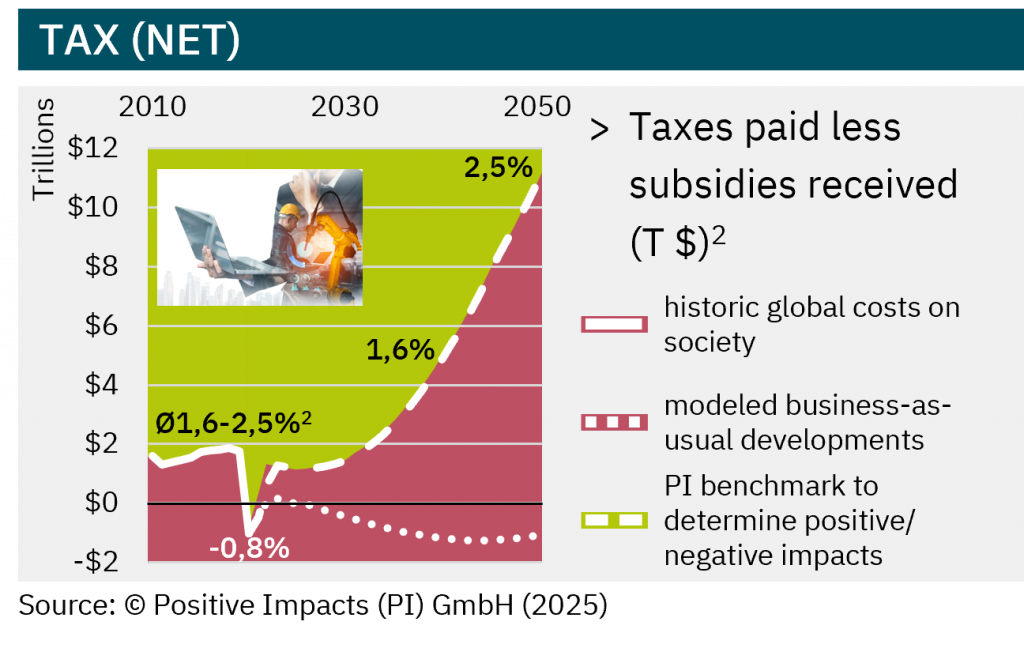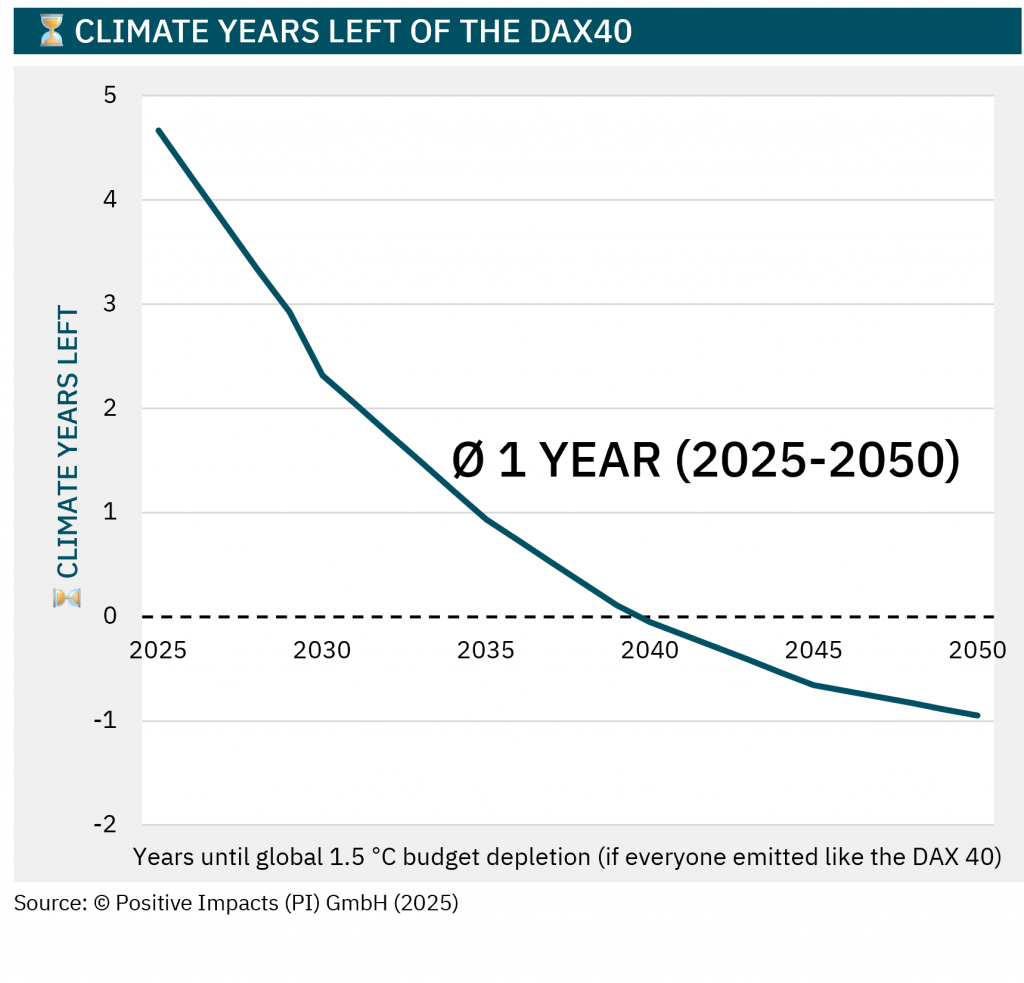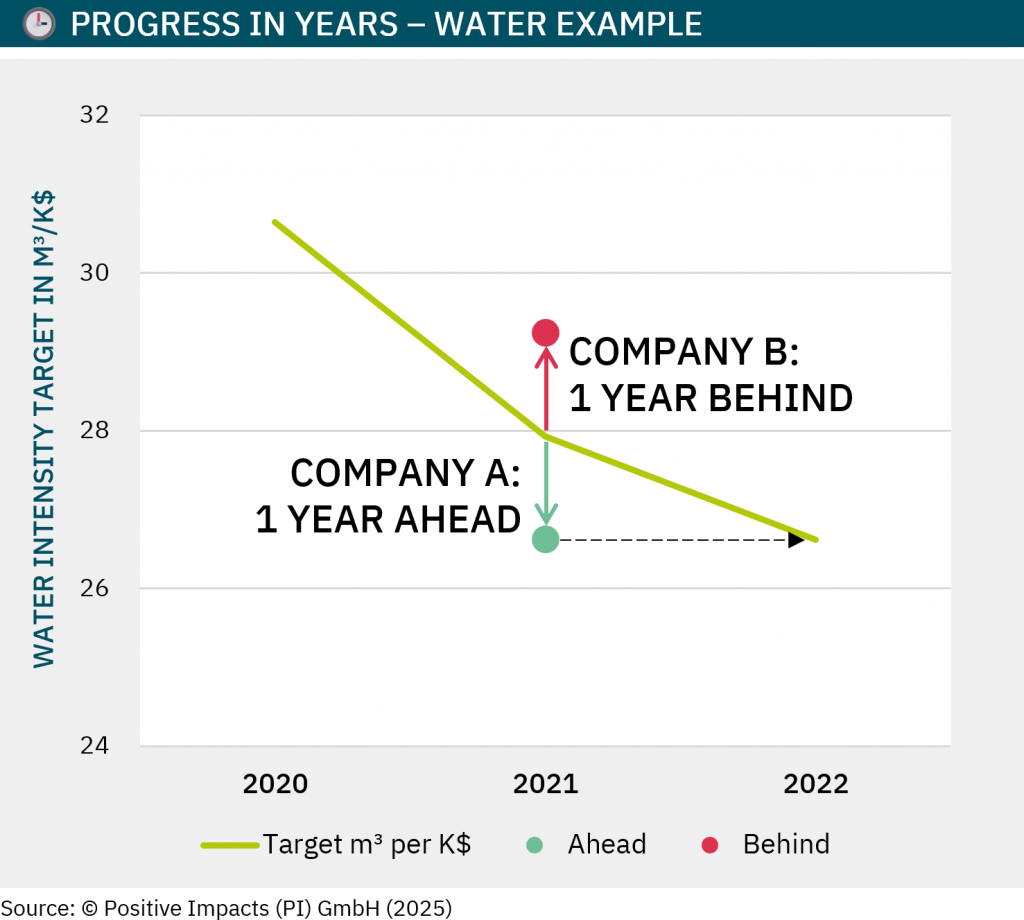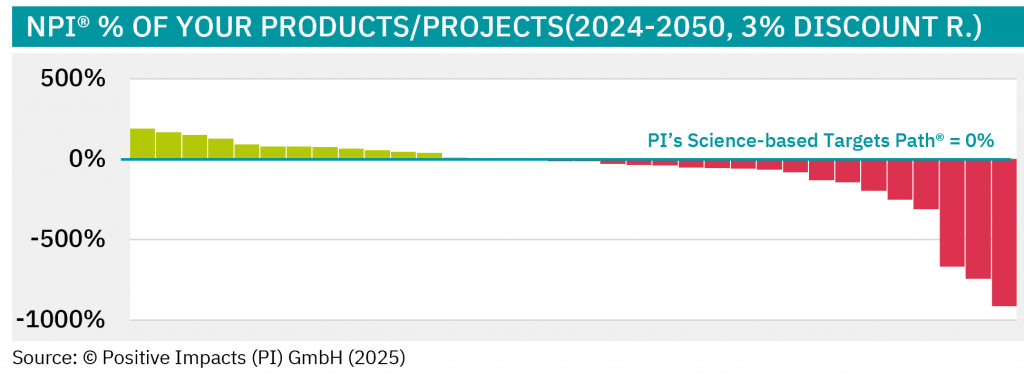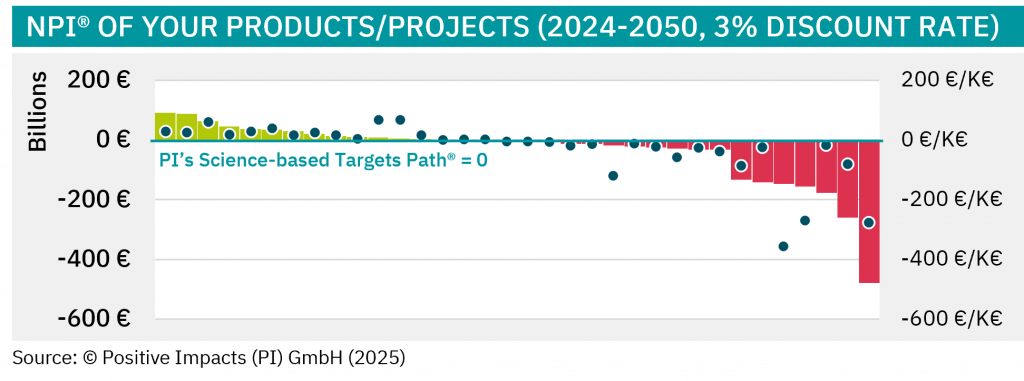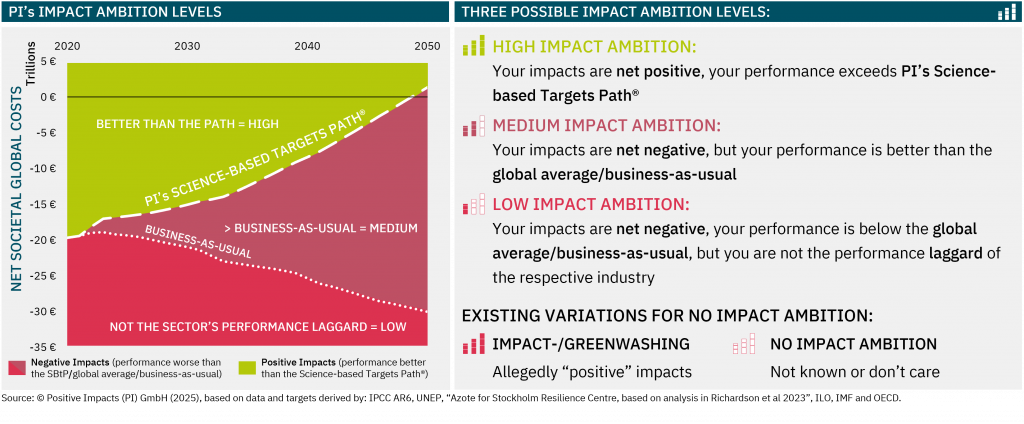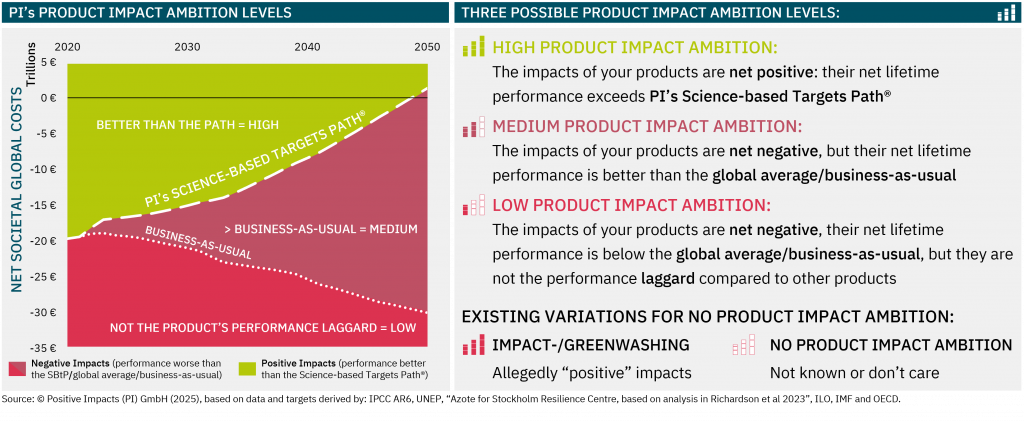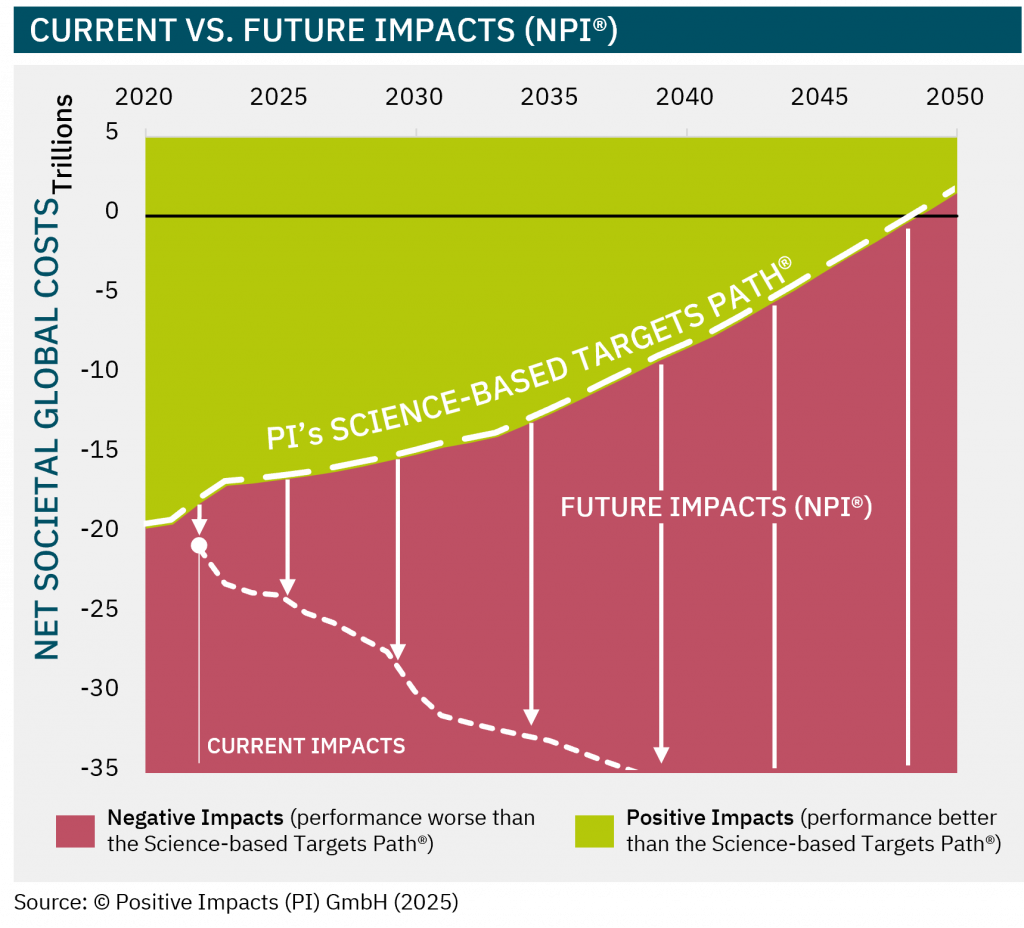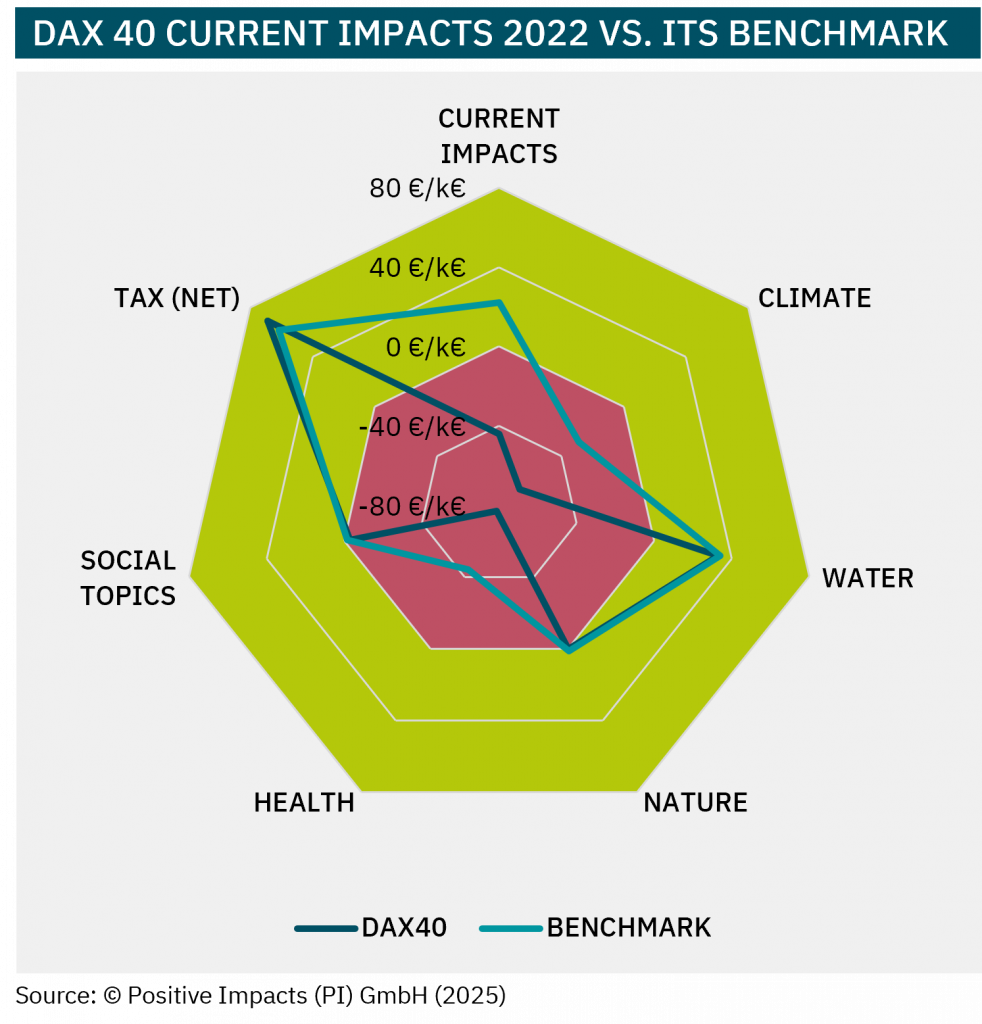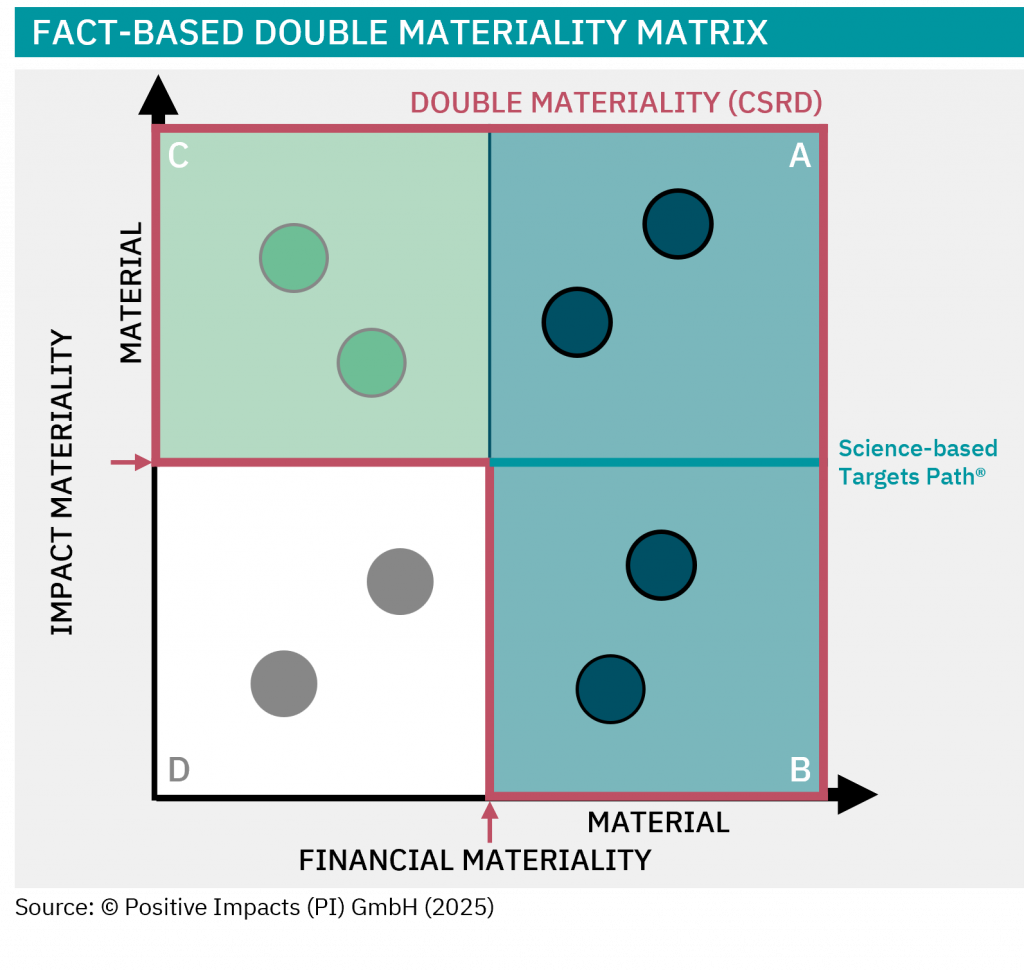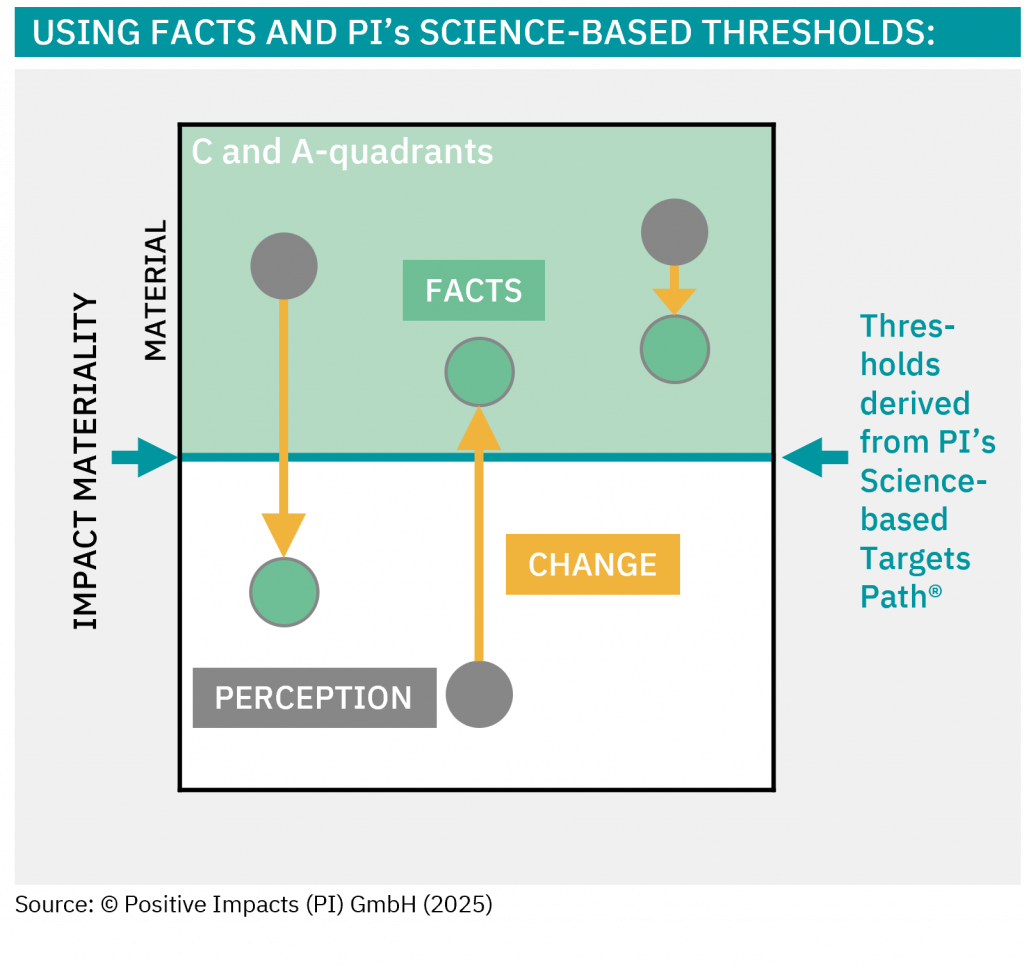CURRENT IMPACTS of your organization — in % and €/k€
Current Impacts show how your organization is performing today compared to the expected level for the current year — both in percentage and monetary terms.
They quantify how close your current operations are to full alignment with the PI Science-based Targets Path®. They:
- Express performance as a percentage (−X % to +X %) and in monetary terms (€/k€), where 0 = full alignment
- Weight impacts by their severity, so more significant outcomes (e.g. a fatality vs. an injury) carry greater influence
- Translate impact gaps into time — “Progress Years” show how many target-years performance is ahead or behind (see next tabs)
- Highlight strengths and gaps, helping you prioritize what matters most
- Aggregate results across six topics: climate, water, nature, health, social matters, and net tax
- Enable benchmarking across sectors, activities, products, and value chains
- Uses an open-ended scale, capturing both positive and negative net impacts
After quantifying Current Impacts, your sustainability performance is classified into three Impact Ambitions — high, medium, or low.
These ambition levels reveal how your organization compares to the PI Science-based Targets Path® and to the global average, showing at a glance whether you are leading, aligned, or falling behind.
